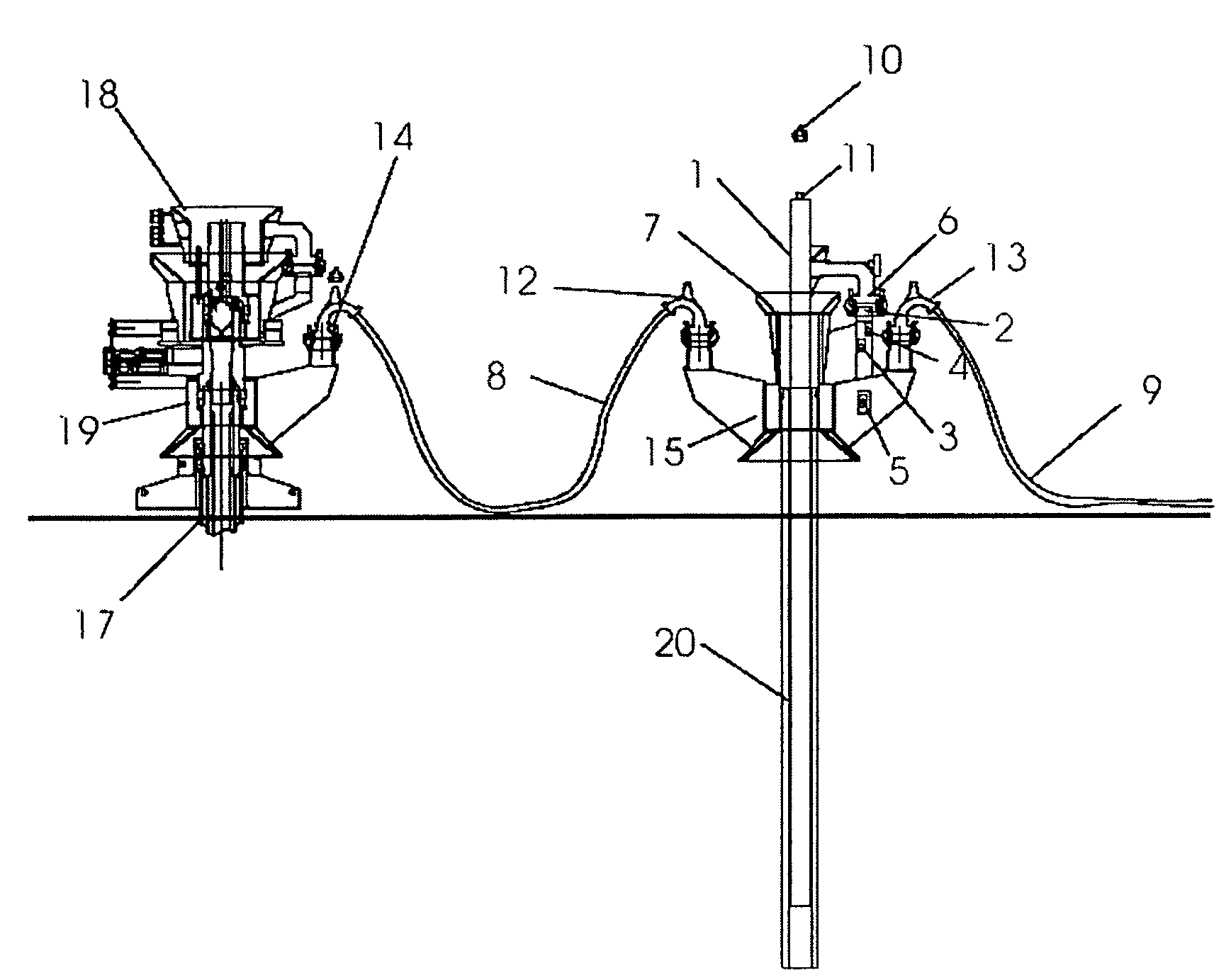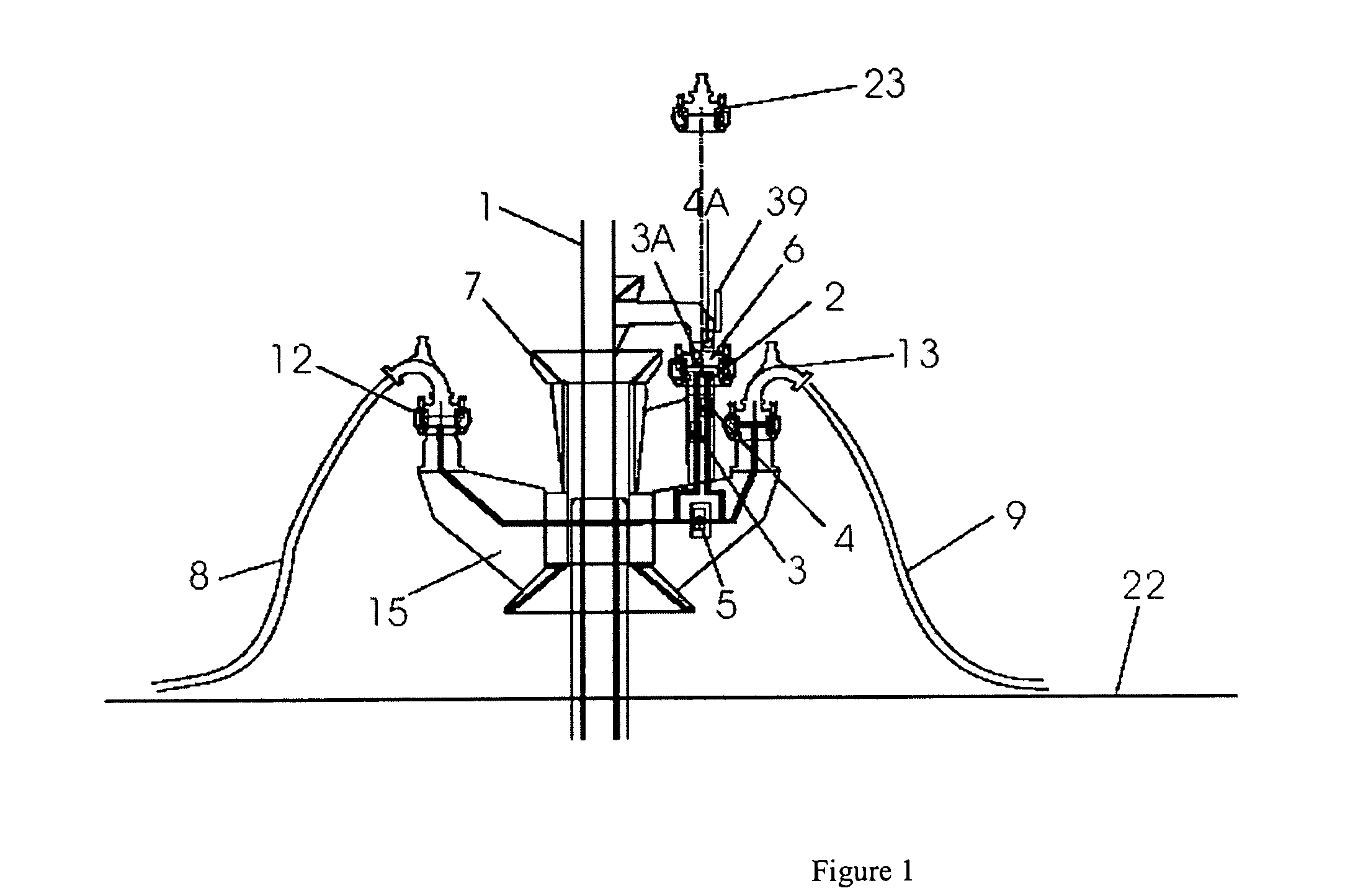Subsea pumping module system and installation method
a pumping module and installation method technology, applied in underwater drilling, drilling machines and methods, borehole/well accessories, etc., can solve the problems of increasing operating costs and risks, requiring changes in pab-wct assemblies, and involving equipment and the environment, so as to facilitate the removal of the pumping module and avoid large underwater oil spills.
- Summary
- Abstract
- Description
- Claims
- Application Information
AI Technical Summary
Benefits of technology
Problems solved by technology
Method used
Image
Examples
Embodiment Construction
[0051]The following numbers apply to the description of the embodiments of the present invention:[0052]1. pumping module[0053]2. IFI mandrel[0054]3. suction on-off valve[0055]3A. suction on-off valve[0056]4. discharge on-off valve[0057]4A. discharge on-off valve[0058]5. bypass valve[0059]6. pump module connector[0060]7. pumping module guide funnel[0061]8. module upstream flow line[0062]9. module downstream flow line[0063]10. pumping module installation tool[0064]11. pumping module neck[0065]12. VCM—suction[0066]13. VCM—discharge[0067]14. WCT VCM[0068]15. base structure[0069]17. subsea wellhead[0070]18. wet Christmas tree (WCT)[0071]19. production adaptor base (PAB)[0072]20. hollow pile driven into seabed[0073]21. pile[0074]22. seabed[0075]23. closed cover[0076]24. base guide funnel[0077]29. seal protector[0078]30. pump motor[0079]31. pump[0080]32. pumping module flow inlet[0081]33. pumping module flow outlet[0082]34. pump support[0083]35. mechanical synchronizer[0084]36. pump casing...
PUM
 Login to View More
Login to View More Abstract
Description
Claims
Application Information
 Login to View More
Login to View More - R&D
- Intellectual Property
- Life Sciences
- Materials
- Tech Scout
- Unparalleled Data Quality
- Higher Quality Content
- 60% Fewer Hallucinations
Browse by: Latest US Patents, China's latest patents, Technical Efficacy Thesaurus, Application Domain, Technology Topic, Popular Technical Reports.
© 2025 PatSnap. All rights reserved.Legal|Privacy policy|Modern Slavery Act Transparency Statement|Sitemap|About US| Contact US: help@patsnap.com



